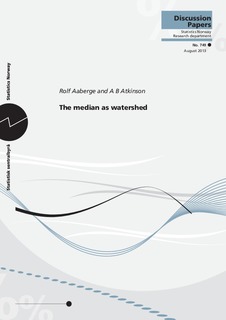| dc.description.abstract | This paper is concerned with concepts – poverty, inequality, affluence, and polarization – that are typically treated in different literatures. Our aim here is to place them within a common framework and to identify the way in which different classes of income transfers contribute to different objectives. In particular, we examine the role of transfers that preserve both the mean and the median, and the importance of distinguishing between transfers across the median and transfers on one side of the median.
The aim of the paper is to bring out some of the implications of adopting the median as a dividing line for these measurement purposes, particularly with respect to the robustness of the conclusions reached. In doing so, we develop the two alternative approaches – primal and dual – applied to Lorenz curves in Aaberge (2001). Our focus is on “well-off” countries where poverty is a minority, rather than a majority, phenomenon. At the other end of the scale, rich people are found in all countries, but less attention has been paid to the definition of cut-offs for affluence. The measurement of “affluence” can proceed along similar lines to the measurement of poverty. The threshold may be set, relatively, as a percentage of the median, and we can ask similar questions about the sensitivity and seek similar dominance results. Moreover, we focus on societies that have a middle class in the sense that the median person is never defined as “rich”. The motivation of Foster and Wolfson’s paper “Polarization and the decline of the middle class” (1992/2010) was the sensitivity of conclusions to the – essentially arbitrary – definition of the middle class. They proposed “a range-free approach to measuring the middle class and polarization based on partial orderings” (2010, page 247). We introduce an alternative partial ordering defined in terms of a bi-polarization curve capturing the distance from the median. | nb_NO |
